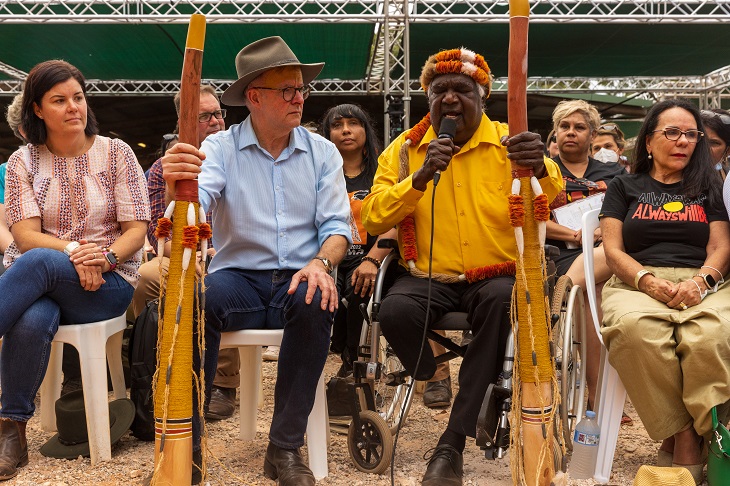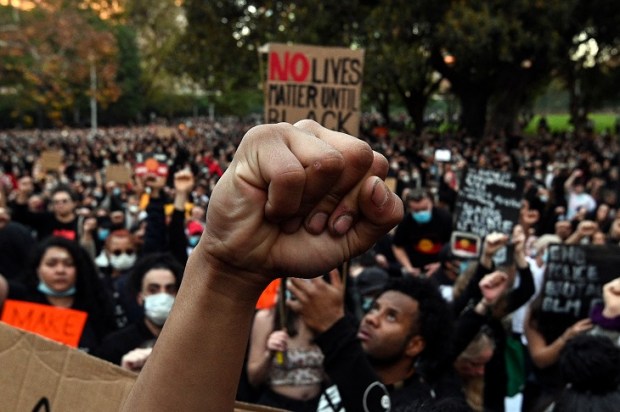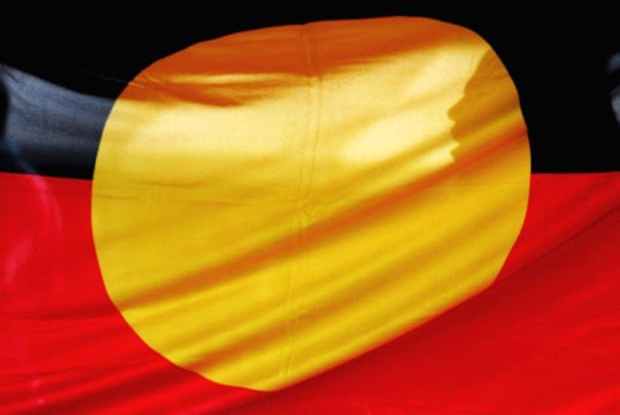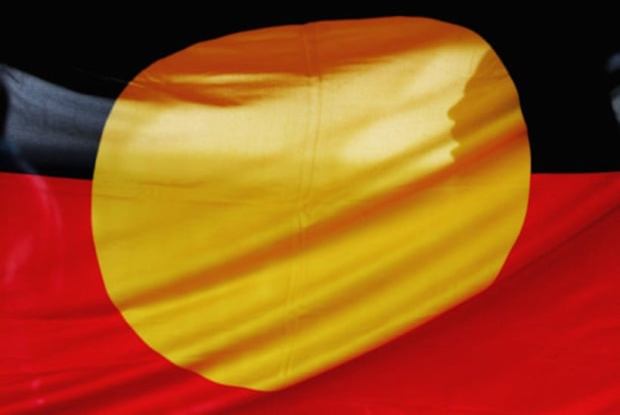There are two elements to this proposed Voice referendum. The Voice itself and its inclusion in the Constitution. The latter is, appropriately, termed ‘enshrinement’. In other words, it’s not a practical imperative but an ideological one.
As far as the Voice itself is concerned, its justification hinges on the idea that Indigenous people should have a say in the formulation of laws that affect them and that is the question I will address in this article. As I will show, it is a specious argument.
To begin with, we need to understand who the Indigenous people are and what are the laws that are being made with respect to them.
There are three broad groups of Indigenous people, each quite different, apart from a common ethnic link.
The first group, and the most populous, are urban Aboriginals who live in large cities and towns. In the main, they are virtually indistinguishable from anyone else. They are educated and employed. They do not live together in enclaves, instead occupying the same spaces as most Australians and other residents. Their aspirations, values, and life challenges mirror those of mainstream Australian society. It is from this group that the vast majority of activists are drawn.
The second group are urban Aboriginals who live in smaller towns. Generally, these towns have significant Aboriginal populations, and this group has a tendency to live together in enclaves. They socialise largely among themselves. They do suffer a degree of disadvantage, and sometimes racist antipathy. Statistically, they are less likely to attend higher education (which may be symptomatic of the small community), but they are employed in the same proportion as other lower socioeconomic groups. They live in proper houses, their children go to school, and they are generally healthy. Much of the disadvantage they suffer is attributable primarily to their low socioeconomic status, not their race.
Then there are the remote and/or tribal Aborigines living in isolated communities in outback towns. These groups tend to be close-knit with less ethnic diversity. They live in communities with high-level family connections and report a lower standard of education than their urban cousins. Given the size and isolation of these communities, they are often unemployed and practice, to varying extents, aspects of traditional culture. In many of these communities, disease, alcoholism, and both domestic and sexual abuse are rife. In particular, tribalism is a major inhibitor of progress. It is in these regions where ‘the gap’ is most pronounced.
For example, in Aurukun North Queensland, in January 2020, violence flared up to the extent that 300 of the 1,200 residents fled the community. There is a structural problem in Aurukun Shire which is culturally divided into five clan groupings: Wanam, Winchanam, Puutch, Apalech, and Chara. Generational vendettas based on ‘payback’ have regularly flared into street fights among males aged between 16 and 49, armed with bows and spears. Aurukun is not alone. Wadeye, in the Northern Territory, is another case. Dysfunctional situations like this make it difficult for wider society to increase the standard of living in these communities. Money does not solve cultural problems when only the Indigenous people within these communities can walk away from historic violence.
Obviously, laws that impact these different Indigenous groups will vary significantly. To suggest that educated urban Indigenous people such as the activist class will have a unique insight into the problems faced by dysfunctional remote communities – an insight superior to those of the local community and recognised subject experts – is fanciful.
Legislation that impacts the Indigenous population covers two main types. There is coercive legislation, designed to curb dangerous and anti-social behaviour, and enhancing legislation, to advance Indigenous people in education, sport, employment, and housing. These are enacted under the provisions of Section 51 (xxvi) of our Constitution, passed – accompanied by much acclaim by the Indigenous community – in the 1967 referendum. That is, Indigenous people welcomed the ability of the government to make special laws to benefit them. It was not considered an imposition on Indigenous people, which is the implicit message of the mantra that ‘it’s only right that Indigenous people should have a say in laws made in respect of them’.
Coercive legislation applies only to those communities that are dysfunctional or severely disadvantaged.
As far as I am aware, no urban Indigenous activist has ever had any major, in principle, issue with enhancing legislation that distributes public money to Indigenous causes, be they substantive – such as guaranteed university places, protection of Indigenous heritage etc – or symbolic, such as promotion of Indigenous culture.
Indigenous people are free to lobby to have these provisions changed or expanded. They can do this through their parliamentary representatives or through numerous activist groups in exactly the same way that farmers have a say in the formulation of laws that affect them via the National Farmers Federation.
On the other hand, coercive legislation is contentious and should be underpinned by the most rigorous expert advice available. And it should certainly be informed by the people most directly affected – particularly leaders in the community.
One of the most contentious of these was the ‘intervention’ imposed on certain communities in the Northern Territory by the Howard government in response to the Little Children Are Sacred report. Coercive measures included welfare income management and banning of alcohol and pornography. Measures also included improvements to health and policing. The intervention received mixed reviews from Indigenous groups, but was generally well received by the communities involved, particularly the women.
More recently, the government instituted a trial of the cashless welfare card in a number of locations not restricted to Indigenous communities. All residents, regardless of ethnicity, were made to comply. That has also been contentious, attracting both support and criticism.
A point to remember is that no Indigenous person is compelled to remain in a community in which restrictions have been imposed if he/she finds them intolerable. Having said that, I accept that moving is a last resort and may not be easy.
Legislation that interferes with the lives of Indigenous people requires rigorous planning, including advice from recognised subject experts and the people most affected. But because this coercive legislation is highly targeted geographically and, generally, time-constrained, getting such advice is not difficult. The best people to provide an Indigenous perspective on such legislation are those living in affected communities and their local elders and Land Council representatives. Of course, Indigenous professionals are appropriately trained in these matters. It would be derelict of government not to engage such advice in any circumstances. The existence of the Voice would not absolve it of this responsibility.
However, the further from these communities the source of advice is, the less useful it is likely to be.
Imagine a scenario in which the local community supports something such as an alcohol ban or a cashless welfare card, but the Voice opposes it because it is discriminatory or ‘racist’.
That is a highly likely result of a national body comprising 24 members, developing advice based on the input from 35 Regional Councils spread across Australia, representing a demographic as widely diverse as the Indigenous population of Australia. There will inevitably be a diluting effect on the advice that originates from the most affected region by the time it is issued by the national body.
What does the government do? Does it accept the advice from the Voice? Does it modify its legislation in some way to placate both sides? Or does it accept the local advice and ignore the Voice, as it should?
Of course, the government is free, in theory at least, to ignore advice from both sources, but the fact is that, in these cases of coercive legislation, the local advice is likely to be more relevant and useful than that from the Voice. In which case, what is the point of the Voice?
Certainly, it will be very effective in lobbying for more enhancing legislation, more university placements, more grants etc, but in the areas where it really matters – on the ground in dysfunctional communities – it will be virtually useless in any practical sense.
At the risk of labouring the point, here are the proposed guidelines for the provision of advice, taken from the Co-Design Report:
The Australian Parliament and Government would be ‘obliged’ to ask the National Voice for advice on a defined and limited number of proposed laws and policies that overwhelmingly affect Aboriginal and Torres Strait Islander peoples. There would also be an ‘expectation’ to consult the National Voice, based on a set of principles, on a wider group of policies and laws that significantly affect Aboriginal and Torres Strait Islander peoples.
Have Aboriginal groups not been providing advice up to now? How did all that enhancing legislation appear? Was it just conjured up by well-meaning white politicians? Indigenous leader and political commentator, Warren Mundine, has observed that every time he visits Parliament House to talk to some politician, he finds himself tripping over other Indigenous lobbyists, all busy plying their trade.
Tony Letford, writing in The Spectator Australia, tells us:
Closing the Gap is an organisation mainly funded by various government bodies. According to its website, their objective is to ‘enable Aboriginal and Torres Strait Islander people and governments to work together to overcome the inequality experienced by Aboriginal and Torres Strait Islander people and achieve life outcomes equal to all Australians’.
The organisation was ‘developed in genuine partnership between Australian governments and the Coalition of Aboriginal and Torres Strait Islander Peak Organisations’ (the Coalition of Peaks), to ensure that ‘the views and expertise of Aboriginal and Torres Strait Islander people, including Elders, Traditional Owners and Native Title holders, communities and organisations will continue to provide central guidance to…national governments’. The Coalition of the Peaks is, according to its website, ‘a representative body of over seventy Aboriginal and Torres Strait Islander community-controlled peak organisations and members (who are) to be formal partners with Australian governments on Closing the Gap’. The website also claims that ‘We have worked for our communities for a long time and are working to ensure the full involvement of Aboriginal and Torres Strait Islander peoples in shared decision-making with Australian governments across the country to improve the life outcomes of our people’.
This is a very worthy aim, and one might reasonably ask why we need yet another organisation to replicate this function.
This Voice will not be an insubstantial edifice. As we have seen, it will require a secretariat for the National Body and one for each of 35 Regional Councils. They will require premises. There will be salaries for staff, the cost of elections, allowances for delegates, publication of official and promotional material, websites, commissioning of reports and studies, national and overseas fact-finding missions, attendance at international conferences, and so on. The cost, however constrained initially, will inevitably blow out. And, significantly, this infrastructure will be replicated at state level as well, providing, if nothing else, a useful source of employment for legions of Indigenous Australians.
Normally, establishment of such a large bureaucracy would require a cost-benefit analysis. Has this been done? I suspect not.
As I have intimated, the benefit is likely to be largely illusory. Already we have the Albanese government ignoring advice from prominent elected Indigenous representatives against removing alcohol bans and the cashless welfare card, on the grounds of ‘empowering’ Indigenous people. If empowering Indigenous people were the answer why not just repeal Section 51(xxvi)?
Got something to add? Join the discussion and comment below.
Get 10 issues for just $10
Subscribe to The Spectator Australia today for the next 10 magazine issues, plus full online access, for just $10.


























Comments
Don't miss out
Join the conversation with other Spectator Australia readers. Subscribe to leave a comment.
SUBSCRIBEAlready a subscriber? Log in